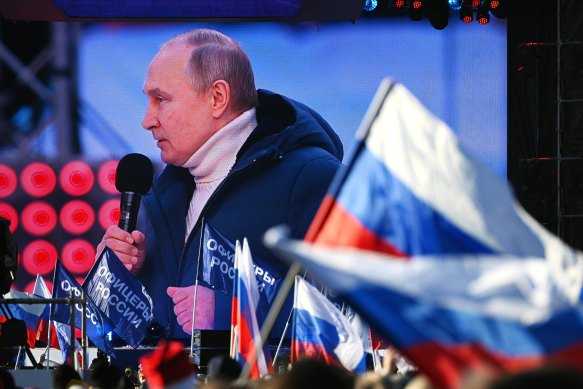
No matter what indicator you use, Russian President Vladimir Putin is winning in the energy markets. Moscow is milking its oil cash cow, earning hundreds of millions of dollars every day to bankroll the invasion of Ukraine and buy domestic support for the war. Once European sanctions against Russian crude exports kick in from November, the region’s governments will face some tough choices as the energy crisis starts to bite consumers and companies.
Electricity costs for homes and businesses are set to soar from October, as the surge in oil income allows Putin to sacrifice gas revenue and squeeze supplies to Europe. UK prices are likely to jump by 75 per cent, while in Germany some municipal utilities have already warned prices will increase in excess of 100 per cent. Russia has successfully weaponised energy supplies; Western governments will come under increasing pressure to spend billions either subsidising household bills or, as is already the case in France, by taking control of power companies.

After that initial struggle, Russia has found new customers for the million barrels a day or so that European oil refiners have stopped purchasing due to self-sanctioning.Credit:AP
The first indicator showing how Putin has turned the oil tide is Russian crude production. Last month, the country’s output climbed back to near pre-war levels, averaging almost 10.8 million barrels per day, only marginally down from the 11 million pumped in January immediately prior to the invasion of Ukraine. Based on industry estimates, oil production is slightly higher so far this month.
It isn’t a blip: July marked the third consecutive month of oil production recovery, with output up significantly from this year’s low point of 10 million barrels set in April, when European buyers started shunning Russia and Moscow scrambled to find new buyers.
Loading
After that initial struggle, Russia has found new customers for the million barrels a day or so that European oil refiners have stopped purchasing due to self-sanctioning. Most of that crude is ending up in Asia — notably India — but also in Turkey and elsewhere in the Middle East. And some is still showing up in Europe, with buyers still purchasing Russian crude ahead of the planned introduction of official sanctions in early November. Everyone who bet that Russian oil production would continue to drop — myself included — got it wrong.
The second indicator is the price of Russian oil. Initially, Moscow was forced to sell its flavours of crude at huge discounts to other varieties to entice buyers. In recent weeks, however, the Kremlin has regained pricing power, taking advantage of a tight market.
ESPO crude, a category of Russian oil from the Far East, is a good example of the new trend. At the low earlier this year, it sold at a discount of more than $US20 a barrel to Dubai crude, the regional oil benchmark for Asia. Recently, ESPO crude has changed hands at parity to Dubai. Urals crude, the flagship Russian oil export to Europe, isn’t benefiting as much as ESPO, as its key buyers have traditionally been countries such as Germany rather than India. But it’s also recovering in price, selling recently at $US20 to $US25 a barrel cheaper than the Brent benchmark, after trading at a discount of almost $US35 in early April.
Moscow is finding new commodity traders, often operating from the Middle East and Asia and probably financed by Russian money, willing to buy its crude and ship it to hungry markets. With Brent crude hovering at close to $US100 a barrel, and with Russia able to offer smaller discounts, there’s plenty of money coming in to the Kremlin. For now at least, energy sanctions aren’t working.









 Add Category
Add Category